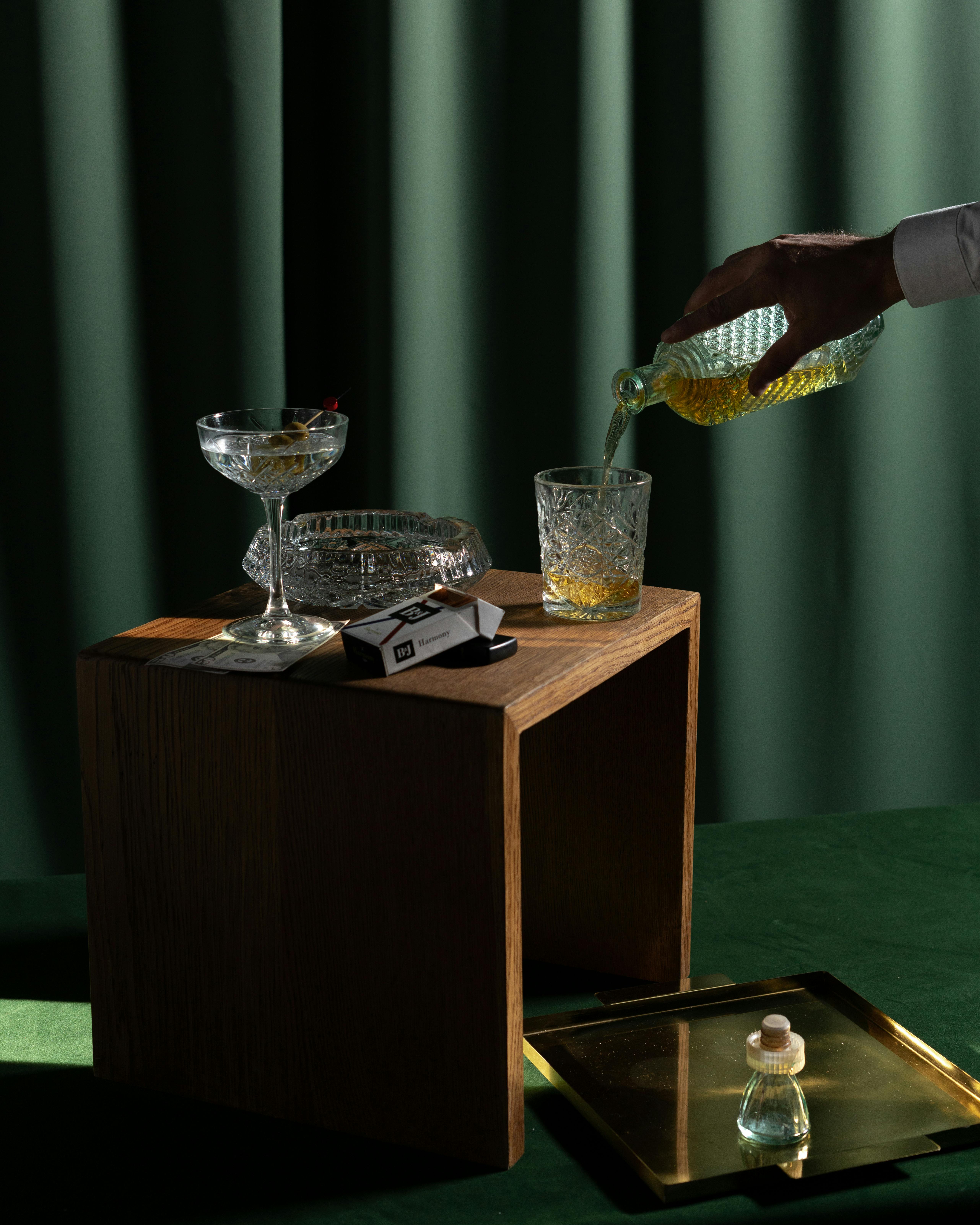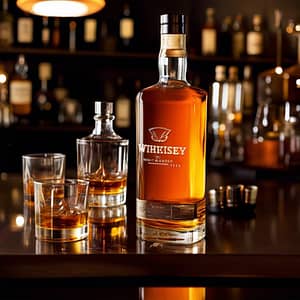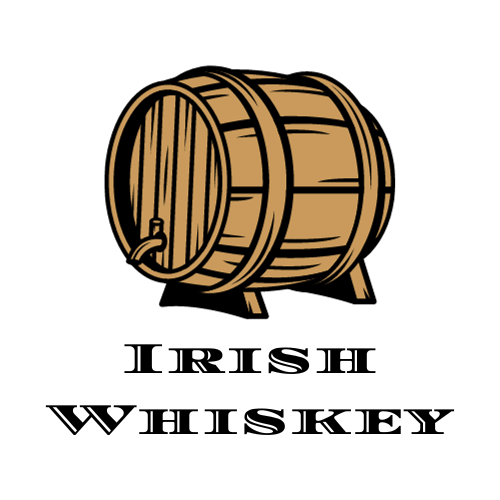Whiskey aficionados rejoice! If you’ve ever found yourself standing in front of a well-stocked bar, overwhelmed by the selection of whiskeys, this article is for you.
In this simple guide, we will explore the differences between Scotch Vs Bourbon, two of the most popular types of whiskey in the world. From the distillation process to the flavor profiles, we’ll break it down in a friendly and approachable manner. So sit back, pour yourself a dram, and let’s embark on a journey to understand the wonderful world of Scotch and Bourbon. Cheers!
Scotch vs Bourbon: A Simple Guide to Whiskey Choices
Introduction to Scotch and Bourbon
When it comes to whiskey, two of the most popular choices are Scotch and Bourbon. Both of these spirits offer unique flavors and characteristics that appeal to whiskey lovers around the world. Whether you are a seasoned connoisseur or just starting to explore the world of whiskey, understanding the differences between Scotch and Bourbon can enhance your drinking experience. In this guide, we will delve into the history, ingredients, aging process, production locations, popular brands, food pairings, and price ranges of Scotch and Bourbon, so you can make an informed choice and find the perfect whiskey for your taste.
History of Scotch
Scotch whisky has a rich and storied history that dates back centuries. Many believe that the art of distilling whisky in Scotland dates back to the 15th century, which makes it one of the oldest spirits in the world. Although there is debate about the precise origins of Scotch whisky, it is widely recognized that monks brought the knowledge of distillation techniques to Scotland. Scotch gained popularity in the 19th century with the advent of blended whisky, which combined malt and grain whiskies to create a smoother and more approachable flavor profile. Scotch enthusiasts now recognize and admire its complex flavors, which experts often describe as rich with smoky and peaty notes.
History of Bourbon
The history of Bourbon whiskey is deeply rooted in American culture. The name “Bourbon” itself pays homage to the Bourbon County in Kentucky, where the spirit was first produced in the late 18th century. Scottish and Irish immigrants are widely believed to have brought the distillation techniques to America, although the exact origins of Bourbon are debated. The United States mandates that Bourbon whiskey production takes place within its borders and that it primarily consists of a grain mixture containing at least 51% corn. This gives Bourbon its unique sweetness and smoothness, making it a beloved choice for whiskey enthusiasts worldwide.
Also Check: Bourbon Vs Rye: Exploring American Whiskey’s
Ingredients and Distillation Process
One of the fundamental differences between Scotch and Bourbon lies in their ingredients and distillation processes. Scotch whisky primarily consists of malted barley, although distillers may also use other grains such as wheat or rye. Distillers finely grind the malted barley and mix it with water to activate enzymes that convert starches into fermentable sugars. They then ferment the resulting liquid, called the ‘mash,’ by adding yeast. Distillers use pot stills or continuous column stills to distill the whisky, allowing the alcohol to evaporate and condense, creating a spirit with distinct flavors and aromas.
Conversely, Bourbon whiskey must primarily consist of corn, with a minimum requirement of 51% corn content. The remaining grains used in Bourbon production can include barley, rye, or wheat. The grains are mixed with water and cooked to extract the sugars, creating a “mash.” The mash is then fermented with yeast, which converts the sugars into alcohol. The distillation process for Bourbon typically involves the use of a continuous column still, which allows for a higher proof spirit. This process gives Bourbon its characteristic sweetness and smoothness.

This image is property of images.pexels.com.
Flavor Profile
One of the most fascinating aspects of whiskey is the wide range of flavors it possesses. Factors such as the region of production, the type of barley used, and the aging process contribute to the diverse flavors that are characteristic of Scotch whisky. Some Scotch whiskies have a smoky and peaty character, derived from the use of peat during the malting process. Others offer fruity, floral, or even nutty notes. It is this wide range of flavors that makes Scotch a favorite for those who enjoy exploring the complexity of whiskey.
Bourbon, on the other hand, is characterized by its sweetness and smoothness. The high corn content gives Bourbon its distinct caramel and vanilla flavors. Depending on the mash bill used, Bourbon may also exhibit spicy or fruity notes. The aging process in charred oak barrels further enhances the flavor profile, infusing the whiskey with hints of oak, spice, and sometimes even a touch of smokiness. Bourbon’s flavor profile makes it an excellent choice for those who prefer a sweeter and more approachable whiskey.
Aging Process
Both Scotch and Bourbon undergo an aging process that significantly impacts their flavor profiles. Typically, Scotch whisky ages for a minimum of three years, although many premium Scotch whiskies age for much longer. During the aging process, Scotch undergoes storage in oak barrels, actively contributing to the development of its flavor.
The type of barrel used, whether it’s a new or used oak, can also influence the whiskey’s character. The aging process allows the whiskey to mellow and develop complex flavors, resulting in a smoother and more refined spirit.
Bourbon, on the other hand, has specific legal requirements for aging. To be labeled as ‘straight Bourbon,’ distillers subject the whiskey to a minimum two-year aging process in new, charred oak barrels. However, to be considered “Bourbon,” there is no specific aging requirement. Many distilleries age their Bourbons for four years or more, which allows the whiskey to develop rich flavors and aromas. The charred oak barrels used in the aging process contribute to the whiskey’s color and impart flavors such as caramel, vanilla, and oak. The aging process plays a crucial role in enhancing the overall quality and complexity of Bourbon.

This image is property of images.pexels.com.
Production Locations
Scotch whisky is produced exclusively in Scotland and is protected by law. The unique terroir and climate of Scotland play a significant role in shaping the character of Scotch. Each region in Scotland has its own distinct style, influenced by factors such as local water sources, barley varieties, and traditional production methods. From the peaty and robust whiskies of Islay to the more delicate and floral expressions of the Lowlands, Scotch offers a diverse range of flavors and styles for every palate.
Popular Brands
Both Scotch and Bourbon have a wide range of popular brands that offer unique expressions and flavors. Some of the well-known Scotch whisky brands include Glenfiddich, Macallan, Lagavulin, and Highland Park. These brands offer a variety of Scotch whiskies, each with its own distinctive character and flavor profile. From the peaty and smoky Islay whiskies to the smooth and honeyed Highland drams, there is a Scotch whisky for every taste preference.
In the world of Bourbon, enthusiasts hold brands like Jim Beam, Maker’s Mark, Buffalo Trace, and Woodford Reserve in high regard. Each of these brands offers a range of Bourbons, providing options for different budgets and flavor preferences. The popularity of Bourbon has surged in recent years, leading to an explosion of craft distilleries and new expressions on the market. Whether you prefer a classic, well-established brand or want to explore the offerings of a smaller, artisan distillery, the world of Bourbon has something to offer.

Source: TheTechBrain AI
Food Pairings
Pairing whiskey with food can enhance the overall dining experience, bringing out the flavors and complementing different dishes. When it comes to Scotch whisky, the smoky and peaty expressions can be beautifully matched with grilled meats, smoked salmon, or hearty stews. The more delicate and floral Scotch whiskies pair well with seafood, light desserts, or even a cheese plate. Ultimately, the pairing depends on personal preference, and exploring different combinations can be a delightful adventure.
Bourbon, with its natural sweetness and rich flavors, lends itself well to pairing with BBQ, grilled meats, or spicy dishes. The caramel and vanilla notes in Bourbon can also be a wonderful complement to desserts such as chocolate or caramel-based treats. Bourbon’s robust flavor opens up a world of endless food pairing possibilities
Price Range
The price range for both Scotch and Bourbon can vary greatly, depending on factors such as brand reputation, age, rarity, and production methods. Scotch whisky, with its long history and extensive range of expressions, offers options for every budget. Entry-level Scotch whiskies can start at around $30, while limited editions and premium releases can reach prices in the thousands. It is worth noting that older Scotch whiskies tend to be more expensive due to the extended aging process required.
Bourbons, especially those from well-established brands, are generally more accessible in terms of price. Whiskey enthusiasts can find entry-level Bourbons starting at around $20, making them an affordable option. However, just like Scotch, there are premium and limited-edition Bourbons that can reach higher price points, particularly if they are older or rare releases. Bourbon has options for every budget, from everyday sippers to special occasion bottles.
FAQ (Frequently Asked Question)
Q: Is Scotch whisky only made in Scotland?
A: Yes, Scotch whisky is produced exclusively in Scotland. The labeling of Scotch is protected by law, and it must adhere to strict regulations to be labeled as such.
Q: Can Bourbon be produced outside of Kentucky?
A: Although Kentucky is closely associated with Bourbon production, Bourbon can be produced in other states as well. To qualify as Bourbon, producers must make the whiskey in the United States and meet specific requirements established by law.
Q: What is the difference between single malt and blended Scotch whisky?
A: Single malt Scotch whisky is produced from malted barley in a single distillery. Blended Scotch whisky, on the other hand, is a combination of malt and grain whiskies from different distilleries.
Q: Are all Bourbons sweet?
A: Factors such as the grain mixture and aging process influence the flavor of Bourbon, which is renowned for its inherent natural sweetness. Some Bourbons may exhibit more spiciness or fruitiness rather than pronounced sweetness.
Q: Can you age Scotch whisky or Bourbon at home?
A: Aging whisky at home is not recommended. The aging process requires specific conditions and expertise to ensure the quality and safety of the spirit. It is best to enjoy Scotch and Bourbon as they are bottled by the distilleries.
Conclusion
Scotch and Bourbon offer distinctive flavors and characteristics that cater to different preferences and occasions. Whichever whiskey you choose, exploring the world of Scotch and Bourbon can be a rewarding journey filled with rich history, unique flavors, and memorable experiences. Whether you prefer smoky Scotch or sweet Bourbon, there’s a whiskey out there to suit your taste. Discover new flavors and indulge in the complexity of this spirit. Cheers to the wonderful world of whiskey and the joy it brings!


